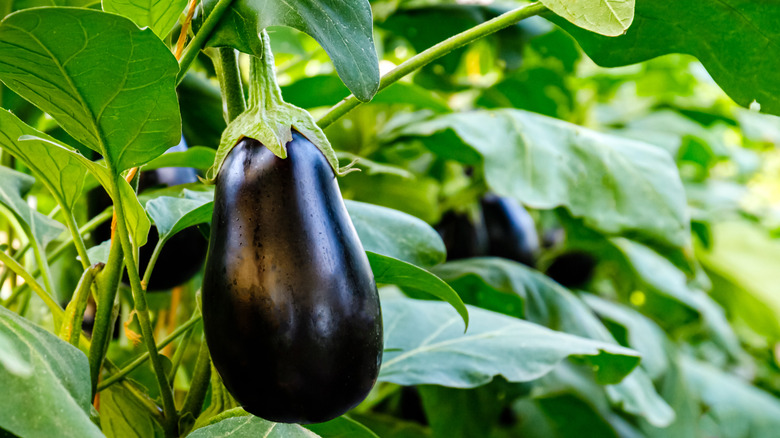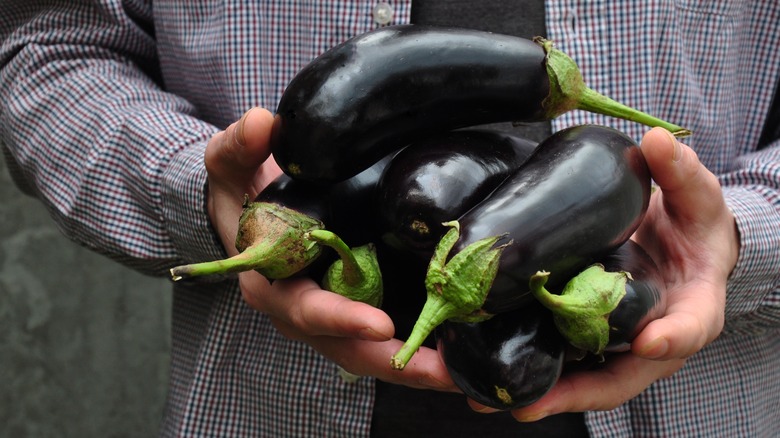The Part Of An Eggplant You Should Never Eat
Eggplants are notoriously known for their deep glossy purplish color and unusual oblong shape. Also known as aubergines, this vegetable is a staple in some cuisines and for good reason — it's tasty (via Medical News Today). Whether that's delighting in some eggplant parmigiana or baba ganoush, eggplants are chock full of health benefits. Because eggplants are a good source of antioxidants they support heart health, cognitive function, eye health, weight management, and reduce the odds of cancer. But do these health benefits apply to every part of an eggplant? Not exactly.
When it comes to eating an eggplant, there's one part you should never eat. Prevention points out that the eggplant flowers and leaves should always be avoided because they're dangerous. They contain a high amount of a toxic compound called solanine. One 2017 study reports the flower bud of an Iranian eggplant contains roughly 135.63 micrograms, while the leaves contain 113.29 micrograms. According to Michigan State University, solanine poisoning can cause vomiting, stomach pain, diarrhea, fever, headaches, slow breathing, and more.
While eating veggies, root-to-stem, is a great way to use every part of the vegetable and decrease waste, some parts of the eggplants are better left in the compost. But what about the skin of an eggplant, is that safe to eat?
Can you eat the skin of eggplants?
Now that the flowers and leaves have been tossed out, it's natural to wonder if the skin should be discarded too, especially since it doesn't always make an appearance during mealtime. Not to mention the skin of other vegetables, like sweet potatoes, are considered safe to eat. In fact, one study published in Advances of Nutrition explains that the dietary fiber content found in fruits and vegetables can be increased simply by keeping the skin on. The point is saving the peels can maximize the nutritional profile of fruits and vegetables, and eggplants are no exception.
Older research published in Toxicology explains that the purple skin of an eggplant contains high amounts of nasunin, which is an anthocyanin. Nasunin supports the body by supplying nutrients to the cells and removing unwanted toxins, shares Medical News Today. It also prevents neuroinflammation, aids in blood flow, and protects the cell membranes in the brain. Because of these benefits, it may even enhance brain function.
According to the U.S. Department of Agriculture (USDA), the peels of young eggplants are safe to eat. However, the skin of older eggplants should be tossed out. When it comes to choosing aubergines, the Produce for Better Health Foundation suggests choosing one that has no discoloration or cracks and is heavy. So if you're keen on trying the thick purple-ish skin, just be sure to thoroughly clean the peel to remove any bacteria and pesticide residue before consuming.


